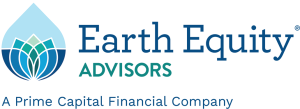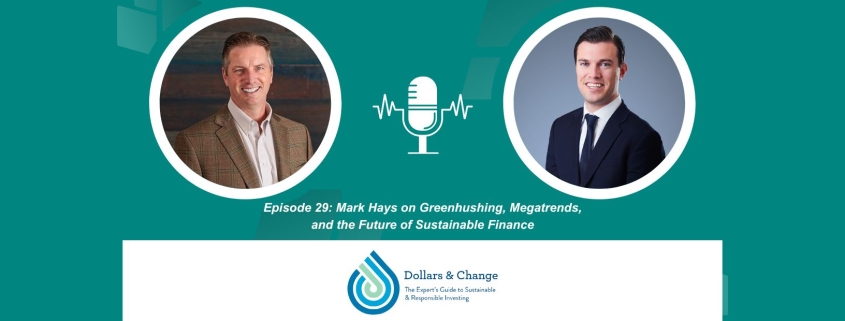Mark Hays on Greenhushing, Megatrends, and the Future of Sustainable Finance
In the latest episode of Dollars & Change: The Expert’s Guide to Sustainable & Responsible Investing, host Peter Krull sat down with Mark Hays, the Director of Sustainable Investing at Glenmede, at the US SIF conference in Washington, D.C. Mark shared his career path, philosophy on sustainable finance, and outlook for the future of thematic investing.
Mark began his career in traditional and alternative investments at Cambridge Associates, where he worked across equities, fixed income, hedge funds, and private equity. A pivotal moment occurred when he helped execute a private equity deal in off-grid solar energy in South Africa. He saw not only the internal rate of return (IRR) of a project, but also the number of people gaining access to electricity. That “aha moment” showed him that impact and financial returns could coexist, setting him on a new path.
From there, Mark pursued his MBA in London, immersing himself in ESG, impact investing, and sustainable finance. In 2018, he helped JPMorgan launch its first U.S. sustainable investing role before joining Glenmede to lead its sustainability strategies.
Thematics and Megatrends
Mark emphasized that climate and sustainability should be seen as megatrends shaping markets for decades to come. At Glenmede, his team focuses on:
- Energy resilience: renewables, nuclear, and natural gas to support a more resilient grid.
- Agricultural technology: boosting yields in a world with less arable land and water.
- Circular economy: reuse and recycle to strengthen domestic supply chains.
- Job Quality: measuring factors like healthcare, diversity, and work-life balance to identify companies that can retain top talent.
He also noted opportunities across infrastructure—from solar and wind projects to nuclear energy, as well as energy efficiency and battery storage that can help unlock new technologies. Cement production makes up 8% of the world’s global emissions, and is seeing investment in less carbon-intensive methods. Steel is also transitioning from gas-fired plants to electric arc furnaces. Other areas of adaptation include transportation, aviation, shipping, and resilient real estate development.
“Greenhushing” and Market Reality
Despite political pressures, Mark said that most large asset managers are still using ESG factors, just not advertising it: “greenhushing.” He emphasized that companies continue to focus on climate resiliency and diversity, equity, and inclusion because they recognize it as financially material.
Looking ahead, Mark believes the labels we use today—ESG, SRI, and impact—may fade as sustainable themes become part of mainstream investing. What gives him hope is the growing momentum among Gen X investors with capital to deploy, as well as foundations using private assets to drive social and environmental change.
To learn more about Mark’s journey and the themes driving sustainable investing today, listen to the full episode here.
Check out some of our recent episodes:
- Chris Castro, Founding Director, Executive Vice President, and Chief Sustainability Officer at Climate First Bank, explains how to align your portfolio with sustainability, resilience, and innovation.
- Maria Lettini, CEO of US SIF, shares why sustainable investing is here to stay.
- Terra McBride, Chief Marketing Officer at Prime Capital Financial (PCF), the parent company of Earth Equity Advisors, interviews Pete on the evolution of SRI.
We’d love to hear your thoughts on this topic. Share your feedback or suggest future topics by contacting us at info@earthequityadvisors.com.
Be good. Invest better.
The Earth Equity Team



